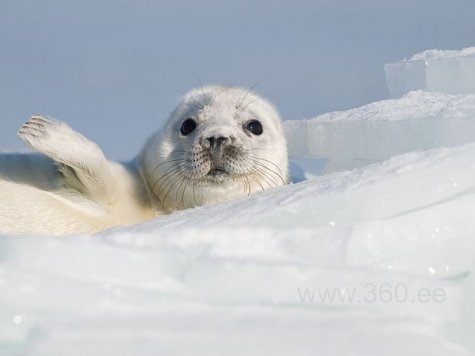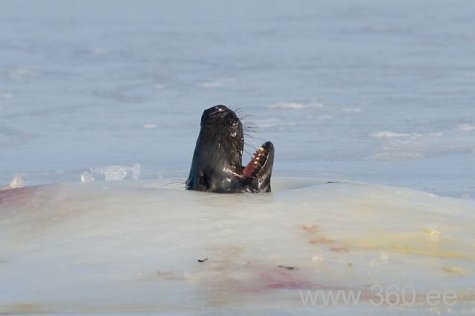On ringed seal ice
Photos: Simmo Kikkas
Translation: Liis
Little ringed seal
Seal at breathing hole
Ringed seal Viigerhüljes or viiger Pusa hispida
Grey seal Hallhüljes Halichoerus grypus
The sea ice is a good and comparatively clean environment where the female ringed seals now give birth to their pups, at a time when the risk of contagious diseases spreading is almost non-existent.
Ringed seals are still an extremely threatened species in Estonia and their number varies around a thousand individuals. Counting them is not easy for investigators. They become adult or sexually mature after six years of sea life, some even after a few more years.
A full-grown adult can weigh up to a hundred kilos and the males are a little bigger. The fur of the ringed seals is adorned with distinct ring-shaped patches, and compared to grey seals they are much smaller. While the round „face“ of the ringed seal reminds of a cat, then the bigger grey seal’s is that of a dog.
The birthing started in February, and the birth weight of the mother seal’s single white baby-furry pup is around five kilos. ´The so-called birthing den or lair is at sea, a snow cave in ice ridges. The fluffy white fur masks the inexperienced new world citizen, romping in the snow, quite well. The pups are suckled for one month, and we have already written about how fat seal milk is.
How do ringed seals get into the water from the fast ice? Near the lair the female seals keep breathing holes free from ice. A diving period can last up to some twenty minutes until they again come up for breath. With the foreflippers, provided with claws, this is not a very complicated motion, even with a quite thick ice cover. They skilfully use cracks in the ice; the seals know their habitat well.
An expedition will be going to the Kesselaid area to see ringed seals and traces of their doings on a ski tour already this Saturday.
See the EMHI ice chart:
This much from the grey seal monitoring camera: the solar panels that managed to transmit images from the day after the storm, Sunday, were blown by sticky wet snow into a snowdrift from the wind that in the evening of the same day turned to southerly.
We will have to wait patiently until the sun again manages to thaw everything out.










